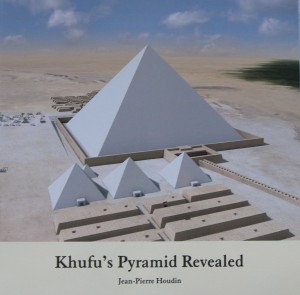Time for the Great Pyramid?
by Mark Rose
March 6, 2010
I first met Zahi Hawass back in the early 1990s, when he and colleague Mark Lehner contributed several excellent articles to ARCHAEOLOGY dealing with excavations of support facilities and tombs of the workers at Giza, as well as an attempt to date the Great Pyramid of Khufu using radiocarbon. Hawass had the same great energy then that he today puts into such efforts as building museum throughout Egypt, attempting to recover artifacts that may have gone abroad under doubtful circumstances, and bringing Egyptian scholars to the forefront in archaeological research.
The recent DNA study of Tutankhamun and other royal and noble mummies is an example of what Hawass  is trying to do. We’ve all seen too many “documentaries†that have no science backing them up. Here, there is a paper in the prestigious Journal of the American Medical Association (JAMA) that gives some of the basic data and interpretations of the DNA analysis and CT scans. Like any scientific research, the methods, data, and conclusions presented in JAMA can now be evaluated and debated. Right now, for example, I am working on a short piece about the results to go into our May/June issue. There’s something I’m checking about one point of the DNA analysis, and I wish that more of the CT scan-bone interpretation side of the study had been presented here. The implication of malaria as a cause in Tut’s death seems speculative—he might have had it earlier and survived. In places, what’s in the JAMA paper seems to have been overplayed in the media. Tut’s widely reported “cleft palette†is actually a partially cleft palette and within the normal range of variation.
is trying to do. We’ve all seen too many “documentaries†that have no science backing them up. Here, there is a paper in the prestigious Journal of the American Medical Association (JAMA) that gives some of the basic data and interpretations of the DNA analysis and CT scans. Like any scientific research, the methods, data, and conclusions presented in JAMA can now be evaluated and debated. Right now, for example, I am working on a short piece about the results to go into our May/June issue. There’s something I’m checking about one point of the DNA analysis, and I wish that more of the CT scan-bone interpretation side of the study had been presented here. The implication of malaria as a cause in Tut’s death seems speculative—he might have had it earlier and survived. In places, what’s in the JAMA paper seems to have been overplayed in the media. Tut’s widely reported “cleft palette†is actually a partially cleft palette and within the normal range of variation.
But the point is that Hawass and colleagues have done the science and put the results out there for discussion. That’s how it should work. Interestingly, a week or two back I received in the mail a copy of Khufu’s Pyramid Revealed from architect Jean-Pierre Houdin, whose investigations into the possible use of an internal spiral ramp in the construction of the Great Pyramid were featured in Bob Brier’s article “How to Build a Pyramid†(May/June 2007) and update “Return to the Great Pyramid†(July/August 2009). Though I have only known Houdin for a few years, his passion and boundless energy for this topic strike me as quite similar to Hawass’s.
In Khufu’s Pyramid Revealed, Houdin offers the latest version of his internal ramp theory, backed up by extensive computer modeling and examination of construction details preserved in the pyramid, with a brief but intriguing account of internal ramps used by Egyptian construction workers in the recent past and even today. Included in this is a 1944 description of 40–50-foot-tall pyramids built of rice straw using an internal ramp.
Houdin’s admiration of the ancient Egyptian achievement is readily apparent:
…the Egyptians of that time had an extraordinary mastery of the techniques used, advanced knowledge in geometry, mathematics, geology, topography, astronomy and a remarkable organization system for the construction operation. …we can only be amazed by the development of engineering which it shows down to the most minute detail.
Toward the end of his book, Houdin reviews the means by which his internal ramp theory could be tested, such as infrared thermography to detect slight differences in surface temperatures. Computer modeling shows predicted surface temperatures for both a solid Great Pyramid and one built with an internal ramp, so there’s a baseline to compare results with. And images from trial at the cathedral of Notre Dame show how it would work. This is the type of nondestructive investigation that Houdin has sought a permit to undertake. So far it has not been forthcoming because of administrative aspects of the Egyptian permit requirements—not because the investigation would in any way endanger the monument.
But surely, if we are comfortable with sampling the royal mummies for DNA, it should be possible to structure this research in a way that meets the permit criteria. Houdin figures it would take about 18 hours on site, at a distance of some 50 meters from the pyramid, to record the needed images. That’s all. The internal-ramp theory seems strong. It should be put to the test—the results, like the DNA studies just released—can then be debated by all.
Comments posted here do not represent the views or policies of the Archaeological Institute of America.






 Heather Pringle is a freelance science journalist who has been writing about archaeology for more than 20 years. She is the author of Master Plan: Himmler's Scholars and the Holocaust and The Mummy Congress: Science, Obsession, and the Everlasting Dead. For more about Heather, see our
Heather Pringle is a freelance science journalist who has been writing about archaeology for more than 20 years. She is the author of Master Plan: Himmler's Scholars and the Holocaust and The Mummy Congress: Science, Obsession, and the Everlasting Dead. For more about Heather, see our 



